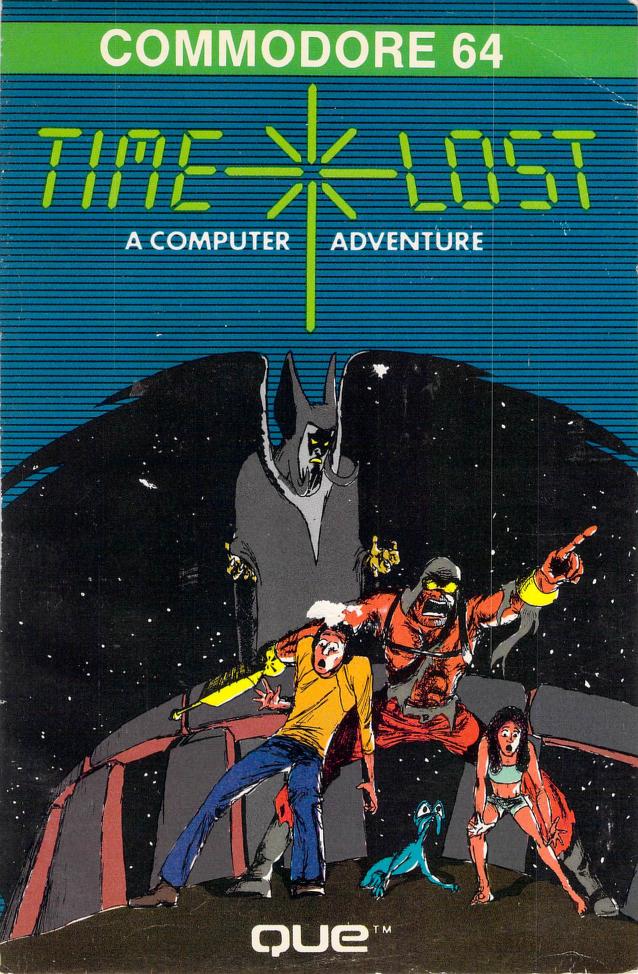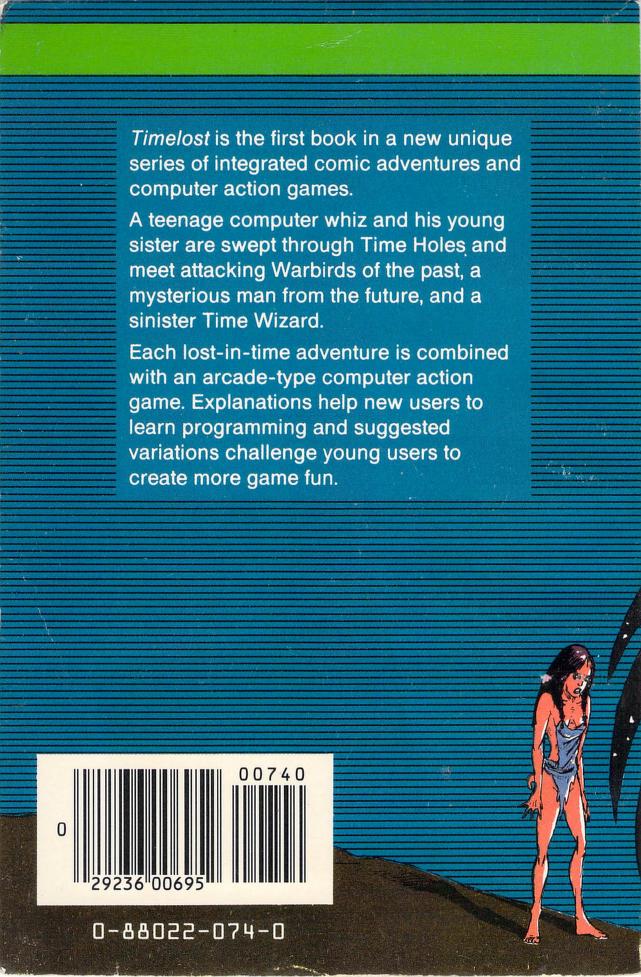
Ok, so this game, if that is the right way to refer to it, is kind of interesting. I’ve never read or played this so I’m not exactly speaking from experience. When I first saw the cover image and read the description, I assumed that this was some sort of interactive fiction game similar to Zork only with comic book style graphics. However, that’s not exactly the case.
It turns out that this title from Que Publishing is not exactly software at all. Instead, it is a comic book with a series of stories. As part of each story, there is an arcade style game that must be typed in that is somehow related to the story or part of it. This is a pretty novel concept and I’m not sure there was much else like it.
From the description on the back of the book:
Timelost is the first book in a new unique series of integrated comic adventures and computer action games.
A teenage computer whiz and his young sister are swept through Time Holes and meet attacking Warbirds of the past, a mysterious man from the future, and a sinister Time Wizard.
Each lost-in-time adventure is combined with an arcade-type computer action game. Explanations help new users to learn programming and suggested variations challenge young users to create more game fun.
There doesn’t seem to be a lot of info out there on this title, however the Internet Archive does have the book that can be downloaded in full. I found an Atari version for Atari 8-bit computers and a Commodore 64 version. A list in the first few pages of the book indicates that there were Timex/Sinclair 1000, TI-99/4A, and VIC-20 versions as well. The stories would of course been the same but the type in code is a little different for each platform.
I can’t speak to the quality of the games as I haven’t seen them yet. Type-in games are going to be relatively limited but that doesn’t mean they can’t be fun. There are six stories and six games that must be typed in to go along with them. While the games are designed to go with the story they are associated with, you don’t really need to read the stories to be able to play the games. I would expect that would have given you the best experience though. To make it even more interesting, there are descriptions of the code and suggestions of things you can modify to change the behavior of the games in different ways.

Back when I first got my Commodore 64, I think this is something that I would have thoroughly enjoyed. Anyone who has spent hours typing in programs from a magazine can probably sympathize :). The description seems to imply that there would be other titles in the series. However, the series seems to have been cut short. I did find references to a second title called Timelost II: Techmagic, including ISBN numbers and references to Commodore 64, Apple II, and PCjr versions with a publication date of June 1985 (the original was published in 1983). However, I haven’t been able to find a cover photos, scan of the book or anything else about it. Either it never actually made it to publication or it must be pretty rare.




